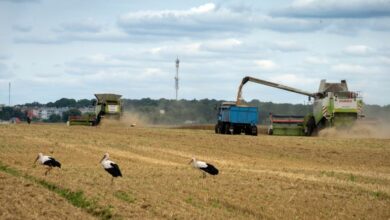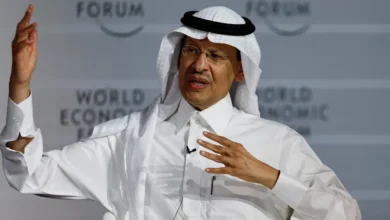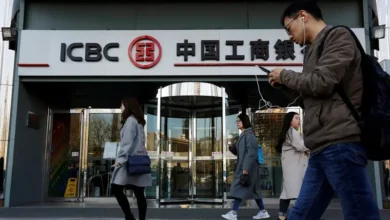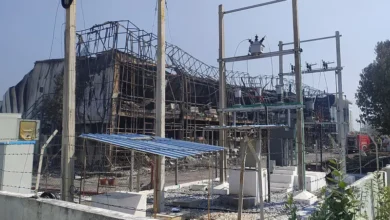After electoral setback, PM Modi may be forced to amend India’s food policy

Indian Prime Minister Narendra Modi is facing a policy conundrum after losing ground in the recent election: how to control food inflation without resorting to export curbs and more imports – steps that have angered farmers, a sizeable voting bloc.
While Modi managed to retain power in a coalition government, his Bharatiya Janata Party (BJP) faces provincial elections later this year in two key agricultural states – Haryana and Maharashtra – that have strong farm lobbies.
Losses in the two states could diminish the BJP’s stature in the newly formed coalition government, weakening Modi as he seeks the consent of allies for policy initiatives for the first time since he took office a decade ago.
“It is true that farmers have been angry with the government,” said Rampal Jat, national president of the Kisan Mahapanchayat, or farmers’ council. “Knee-jerk policy decisions to ban exports and allow cheaper imports into the country have undercut meagre agricultural incomes.”
To hold down consumer prices, Modi’s administration clamped down, starting in 2022, on exports of staples such as rice, wheat, sugar and onions. It also lowered tariffs on pulse and vegetable oils, allowing cheaper imports.
That did not go down well in the countryside, where more than 45 percent of India’s 1.4 billion people make a living from agriculture.
The BJP, which held 201 rural constituencies in the 543-member parliament, retained only 126 of them in the mammoth April-May election, according to a voter analysis.
Jat said farmers were made a scapegoat for the government’s inability to manage inflationary pressures.
Since higher inflation was one of the factors that helped Modi sweep to power for the first time in 2014, his administration has focused on taming prices and used export curbs as a handy tool to rein in inflation.
Still, food inflation has remained at around 8 percent year-on-year since November 2023, largely because of higher fruit and vegetable prices, pushing up overall retail inflation above the central bank’s medium-term target of 4 percent.
Course correction
Ahead of assembly elections in Haryana and Maharashtra, the BJP will try to woo growers by trying to tilt the balance in favor of farmers, analysts and industry experts said.
“There is a realization that farmers cannot be endlessly penalized for higher inflation, and consumers will have to feel the pinch if prices go up,” said Harish Galipelli, director of ILA Commodities Pvt Ltd. “Consumers, especially urban consumers, have deeper pockets these days but rural India is suffering.”
India’s food ministry did not respond to a request for comment.
Some decisions are imminent, like easing export curbs on at least two commodities to begin with, the experts said. Other longer-term measures could also be considered, like boosting crop yields and raising government-mandated support prices by bigger margins, they said.
The government announced on Wednesday that it would increase support prices that are offered for summer-sown crops, but the raises were unlikely to placate farmers.
Last year, the government raised the rice purchase price by 7 percent, and this year’s increase is only about 5.4 percent, so it is disappointing, said Ravindra Kajal, a rice grower from Haryana state.
“My feeling is that the government will open up rice and onion exports,” said Ashok Gulati, India’s leading farm economist.
“Because rice stocks are three and a half times the required target and there is a forecast for good monsoon rains this year, the government should soon take a call on allowing exports,” Gulati said.
Despite the increase in stocks, rice prices are around 7 percent higher than last year, reflecting the increase in government-set support prices announced at the start of the sowing season in 2023.
As the El Niño weather pattern threatened to curtail monsoon rains last year, India, the world’s biggest rice exporter, banned overseas shipments of non-basmati white rice and imposed curbs on other grades.
Now, state granaries are brimming over with rice stocks and the government is examining all possibilities, including exports, to cut back inventories, said a government source who declined to be identified in line with official rules.
“There is a valid reason for allowing rice exports, and we have urged the government to look into this,” said Prem Garg, president of the Indian Rice Exporters Federation.
Angry over onions
In Maharashtra’s onion-growing belt, the BJP lost all eight seats – reflecting anger over export curbs on one of the most ubiquitous food items in Indian households.
To mollify farmers, Maharashtra Chief Minister Eknath Shinde said last week he would request the federal government to remove curbs on onion exports and instruct state agencies to buy the crop at government-set support prices.
Because of export restrictions, farmers could not recover production costs, said Uttam Kahandal, an onion grower who said that for the first time in two decades, he did not vote for the BJP.
Other than export curbs on onions, lower prices of cotton and soybean have fanned anger against the BJP in Maharashtra. Modest crop procurement rates have also hurt farmers in the state.
During the ten years of Modi’s rule, government-fixed minimum purchase prices for soybean and cotton rose 80 percent and 79 percent versus 175 percent and 115 percent over the previous decade, government data showed.
“If the new government fails to make a serious effort to respond to agrarian distress, it should be willing to sit in the opposition in 2029,” said Devinder Sharma, a farm policy expert, referring to the next general election.










